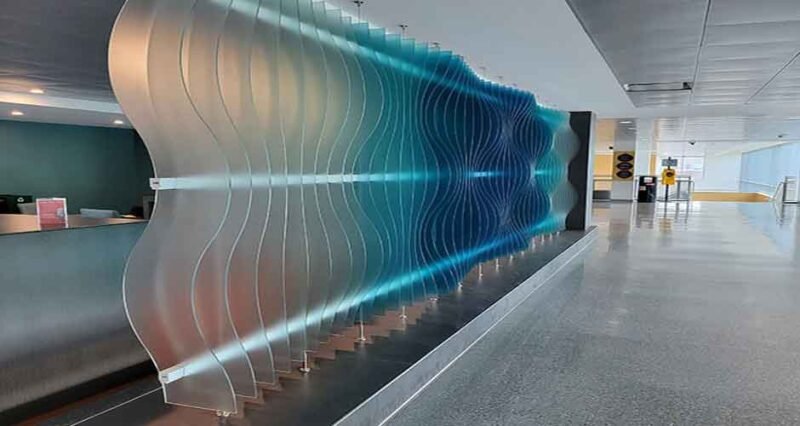
Interior design is continuously evolving, with innovative materials and trends emerging each season. Among these, transparent materials have gained significant traction, revolutionising how spaces are conceptualised and experienced.
This article delves into the latest trends in using see-through materials in interior design, highlighting their versatility, aesthetics, and functionality.
The Rise of Transparent Materials
Transparent materials, such as glass, acrylic, and polycarbonate, offer a unique blend of modernity and elegance. Glass, with its timeless allure, brings a sense of openness and connectivity to a space. Meanwhile, acrylic and polycarbonate materials provide a lightweight, durable alternative to glass.
These materials are not only aesthetically pleasing but also highly functional, offering benefits such as UV resistance and impact strength. In a quest for such materials, many find themselves searching for ‘acrylic sheet near me’, reflecting the growing consumer interest in these versatile products.
Integrating Transparency in Various Spaces
Incorporating transparent materials into different areas of a home or commercial space can dramatically alter the perception and utility of the area.
For living rooms, large glass windows and acrylic furniture can create an illusion of a larger, more open space. In office settings, transparent partitions maintain a sense of openness while providing necessary separation. Even in smaller areas, like bathrooms, using clear materials can make the space appear more expansive and inviting.
Sustainability and Eco-Friendly Aspects
The shift towards transparent materials also aligns with the growing emphasis on sustainability in interior design.
Many transparent materials are recyclable and have a lower environmental impact during production compared to traditional building materials. This eco-friendly aspect appeals to environmentally conscious consumers and designers looking to reduce their carbon footprint through thoughtful design choices.
Innovations in Transparent Material Technology
Advancements in technology have expanded the possibilities of using transparent materials in interior design.
Smart glass, for example, can change from transparent to opaque with the flick of a switch, offering privacy without compromising the aesthetic. Similarly, improved manufacturing processes have made acrylic and polycarbonate materials more accessible and affordable, encouraging their broader adoption in both residential and commercial spaces.
Challenges and Considerations
While the benefits of transparent materials are numerous, there are challenges to consider.
Privacy can be a concern with overly transparent spaces, and the materials’ durability and maintenance requirements vary. Designers must balance aesthetics with functionality, ensuring that the use of transparent materials enhances rather than detracts from the overall design.
Case Studies and Real-World Examples
Examining real-world examples of transparent materials in interior design can provide valuable insights. For instance, contemporary homes often feature floor-to-ceiling glass windows that seamlessly connect indoor and outdoor spaces.
Retail spaces frequently use acrylic displays and fixtures to create a modern, uncluttered look that highlights the products. These examples illustrate the versatility and impact of transparent materials in various settings.
Future Outlook and Trends
Looking ahead, the use of transparent materials in interior design is expected to grow, with innovations in material science and sustainability driving new applications.
Designers will continue to experiment with these materials, pushing the boundaries of what is possible in creating functional, aesthetically pleasing, and environmentally responsible spaces.
A Clear Vision Forward
The integration of transparent materials in interior design represents a fusion of aesthetics, functionality, and sustainability.
As we embrace these trends, we look forward to a future where our living and working environments are not only more visually appealing but also more connected to the world around us. The transparent trend is not just about see-through materials; it’s about envisioning a clearer, brighter future in design.

